Gdańsk 2021-11-04
Electric Multiple Unit ED250 Pendolino.
The EMU (Electric Multiple Unit) Alstom EMU250 is designated in Poland as the ED250 series, and is popularly called "Pendolino". The train consists of seven carriages and is adapted to the normal gauge of the tracks. The train is a high-speed vehicle from the Pendolino family. It is produced by Alstom in the Italian Savigliano factory in the north of Italy. It has the factory designation Alstom ETR 610.
PKP InterCity ordered 20 ETZ Alstom EMU250 trains, ED250 series. The trains are classified as the Express InterCity Premium category. These trains started regular transport in December 2014.
The core of the railway network for the Pendolino trains is the coal main line, which enables the achievement of a constant traveling speed of 200 km / h. Thanks to this, the "Pendolino" trains traditionally connected Warsaw with Katowice. In the south of Poland, other cities have arrived: Kraków, Tarnów, Rzeszów, Gliwice, Bielsko Biała, Wrocław and Jelenia Góra. In turn, the cities of Gdańsk, Gdynia, Iława, Malbork, Tczew and Kołobrzeg were connected in the north of Poland. Each train in Warsaw stops at the following stations: Warszawa Wschodnia, Warszawa Centralna and Warszawa Zachodnia.
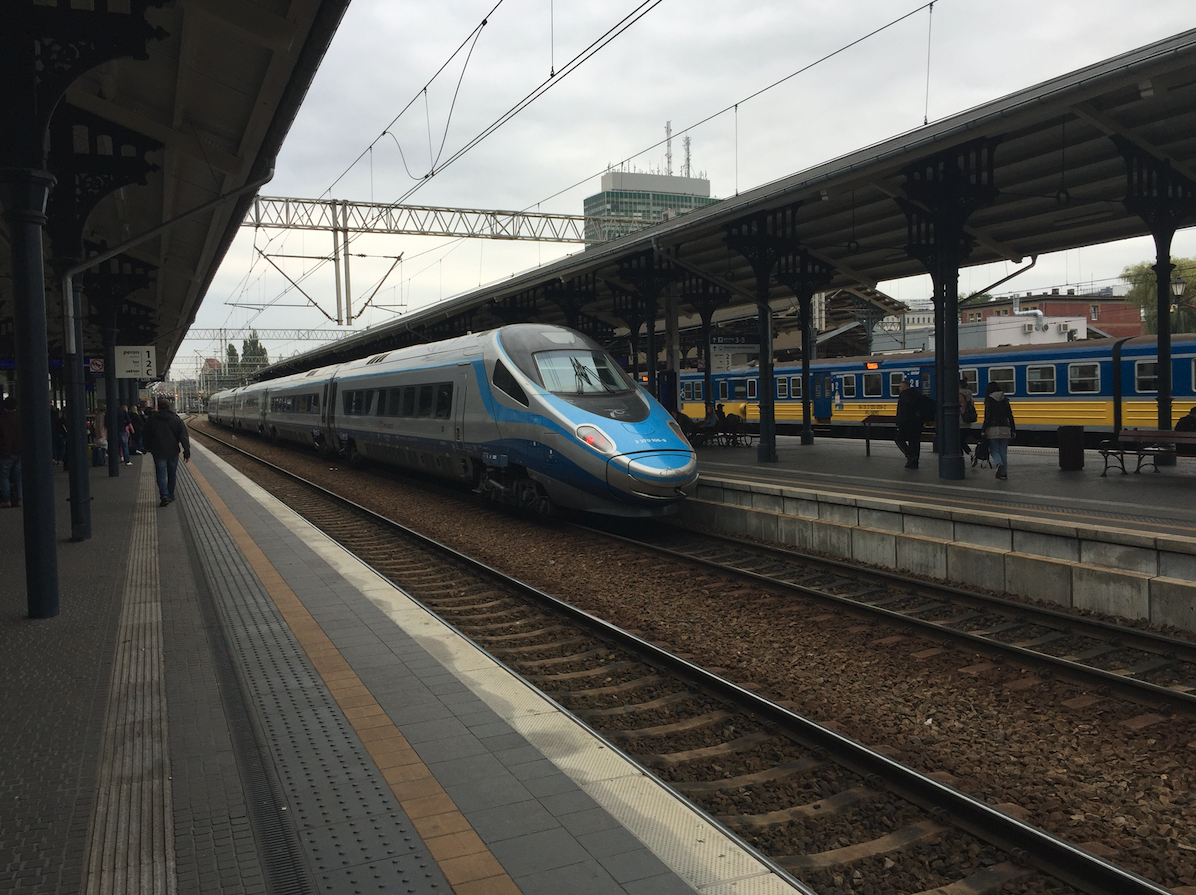
History of high-speed rail in Poland.
We are deliberately omitting the interwar period and the first 50 years after the Second World War. The real fittings for this type of trains began at the beginning of the 90s of the 20th century. Mainly two trains were taken into account: the French TGV and the Italian Pendolino.
The first visit of TGV in Poland. 1991.
In October 1991, a TGV train arrived in Warsaw as part of the International Scientific Conference on High Speed Trains. The train was presented at the Warszawa Zachodnia station for several days. The presented train was the TGV Atlantique 325, which in 1990 achieved a speed record of 515.3 km / h. The train was towed because its electrical systems did not support the DC 3 kV network.
The second visit of TGV in Poland. 1995 year.
In the mid-90s, the TGV train was in Poland from June 12 to 19, 1995. The TGV Reseau 4522 train was multi-system, so it could travel around Poland on its own. The train consisted of 14 wagons. Due to the lack of appropriate certificates and certain risks, the train moved around Poland at speeds of up to 100 km / h, and accelerated to 160 km / h on the coal main line. The train visited many Polish cities, including Kraków, Katowice and Poznań. At each station, the composition aroused great interest of the countrymen. The train in Poland traveled about 1,900 km.
Pendolino tests. 1994.
On May 6, 1994, the EMU type ETR460 arrived in Poland for tests. The train had three carriages with empty boxes. The train was specially configured for the tests on the coal bus. It had two carriages, the first of which was steering and engine, and the second with an emergency braking station and engine. During multiple journeys and analyzes of the obtained results, on May 12, 1994, the EMU Pendolino ETR460 exceeded the speed of 250 km / h and became the fastest train in Central and Eastern Europe. Tests were also carried out on the Warsaw - Gdańsk route to assess the value of the tilting boxes. All tests were positive. The vehicle was presented in Katowice, Częstochowa, Gdańsk and Warsaw.
Tender for high speed trains.
The first tender in which they competed: Fiat Ferroviaria, Siemens and Adtranz, was canceled.
In August 2008, PKP InterCity announced a tender for the delivery of 20 EZT trains, with a maximum speed of 250 km / h. Contrary to the original plans, the required maximum speed was increased from 200 km / h to 250 km / h and the requirement for a tilting box system was abandoned.
On May 30, 2011, PKP InterCity signed a contract worth EUR 665 million (PLN 2.64 billion) with Alstom Transport for the delivery of 20 New Pendolino 7-car EMUs, without the box tilt mechanism and the construction of technical facilities in Warsaw, dedicated exclusively to for the maintenance of the high-speed rail rolling stock. The service center was built at the Warszawa Grochów station in Olszynka Grochowska in the Praga-Południe district.
The first line-up of "Pendolino" came to Poland in June 2013. A series of tests were conducted in Poland. During the speed tests, the speed of 242 km / h was reached on the first day (November 18, 2013). On November 24, 2013, the speed of 293 km / h was reached. It is the highest speed of Pendolino trains in the world. The last Pendolino lineup was delivered on February 14, 2015. Operation started on December 14, 2014. The traveling speed was reduced to 200 km / h. This does not mean, however, that trains with a speed of 200 km / h are equivalent to the "Pendolino". The "Pendolino" simply accelerates much faster. Due to the delay in train deliveries, the manufacturer paid contractual penalties.
In 2019, during the planned renovations, the trains were equipped with on-board wi-fi internet. Due to political reasons, the InterCity company did not manage to introduce "Pendolino" trains on international routes. Especially Germans and Czechs are afraid of competition from InterCity, although the trains have been tested there. In the first year of operation, the Pendolino trains broke popularity records and carried around 3.5 million passengers. By the end of 2018, ED250 trains carried 16.5 million passengers. Due to the pandemic of the "Chinese Virus", ED250 trains did not run from March 15, 2020 to May 22, 2020.
The construction of the ED250.
The train structure is mainly made of aluminum alloys, with closed profiles. Profiles are joined by welding. Welding is performed by automatic welding machines, computer-controlled. Other elements are welded to the frame: floor, side walls, end walls of the wagon, roof.
The train has an unusual drive system. There are four railcars: 1, 2, 6 and 7. These cars have both bogies, but each bogie has only one driving axle. In total, the lineup has eight engines. The asynchronous electric motor is located in the center of the carriage, perpendicular to the axis of the wheels. The power from the engines is transmitted by means of drive shafts with cardan joints and angular axial gears. Gear ratio 62/27 = 2.296.
The rolling axles each have three ventilated brake discs, and the drive axles with angular axle gear have two ventilated brake discs. The wheelbase of all bogies is 2.70 m. The bogie frame is a steel, welded construction. The ED250 train performs very well on the coal line, as the curves have a radius of 4,000 m. Therefore, there are no large vertical and lateral forces. In France, bends with a radius of 3,600 m were adopted for the TGV.
The AC half-type pantographs are located on the roof 3 and 6 of the car, and the DC pantographs are on the roof of the car 4 and 5. Traction converters and auxiliary converters are located under the carcass of carriages 1, 2, 6 and 7, and traction transformers are located under the carcass of carriages 4 and 5.
The ED250 train is designed for getting on and off at stations with a platform height of 0.55 and 0.76 m from the rail head. In addition, thanks to the use of additional retractable steps and platforms for the disabled, the train can also be used at stations whose platforms are built at a height of 0.25 to 0.55 m from the rail head.
Wagon schedule:
1 wagon, 1st class, 45 seats, 1 toilet. 2 wagon, 2nd class, 56 seats, 2 toilets. 3 wagon, bar space, 14 seats for consumers + 2 seats for handicapped people, 1 toilet for handicapped people, conductor's compartment. 4 wagon, 2nd class, 74 seats, 1 toilet. 5 wagon, 2nd class, 74 seats, 1 toilet, place for bicycles - skis. 6 wagon, 2nd class, 74 seats, 1 toilet, place for bicycles - skis. 7 wagon, 2nd class, 61 seats, 1 toilet, quiet zone.
The train takes 386 passengers. There are no standing places.
T-T ED250 data:
The axis system of the entire train is: 1A'A1 '+ 1A'A1' + 2'2 '+ 2'2' + 2'2 '+ 1A'A1' + 1A'A1 '. Track width 1435 mm. Top speed 250 km / h. The composition has 8 asynchronous motors with a total power of 5.664 MW, powered by 3 kV DC. Alternative power supply from AC traction 15 kV AC, 162/3 Hz or 25 kV AC, 50 Hz. Each motor is asynchronous, three-phase with a continuous power of 708 kW. Train width 2.85 m. Height 4.10 m. Length of external carriages 28.20 m. Length of middle carriages 26.20 m. Weight 427 700 kg. Each motor is asynchronous, three-phase with a continuous power of 708 kW.
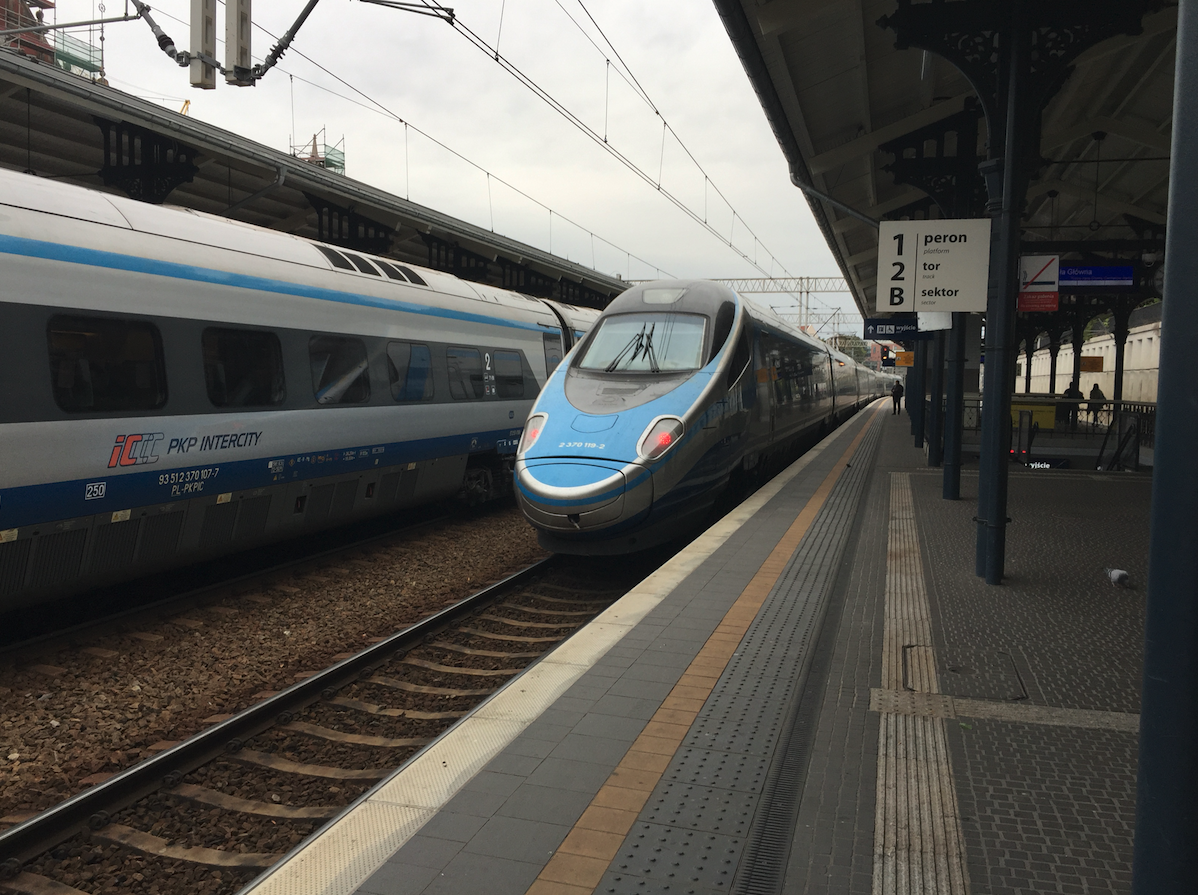
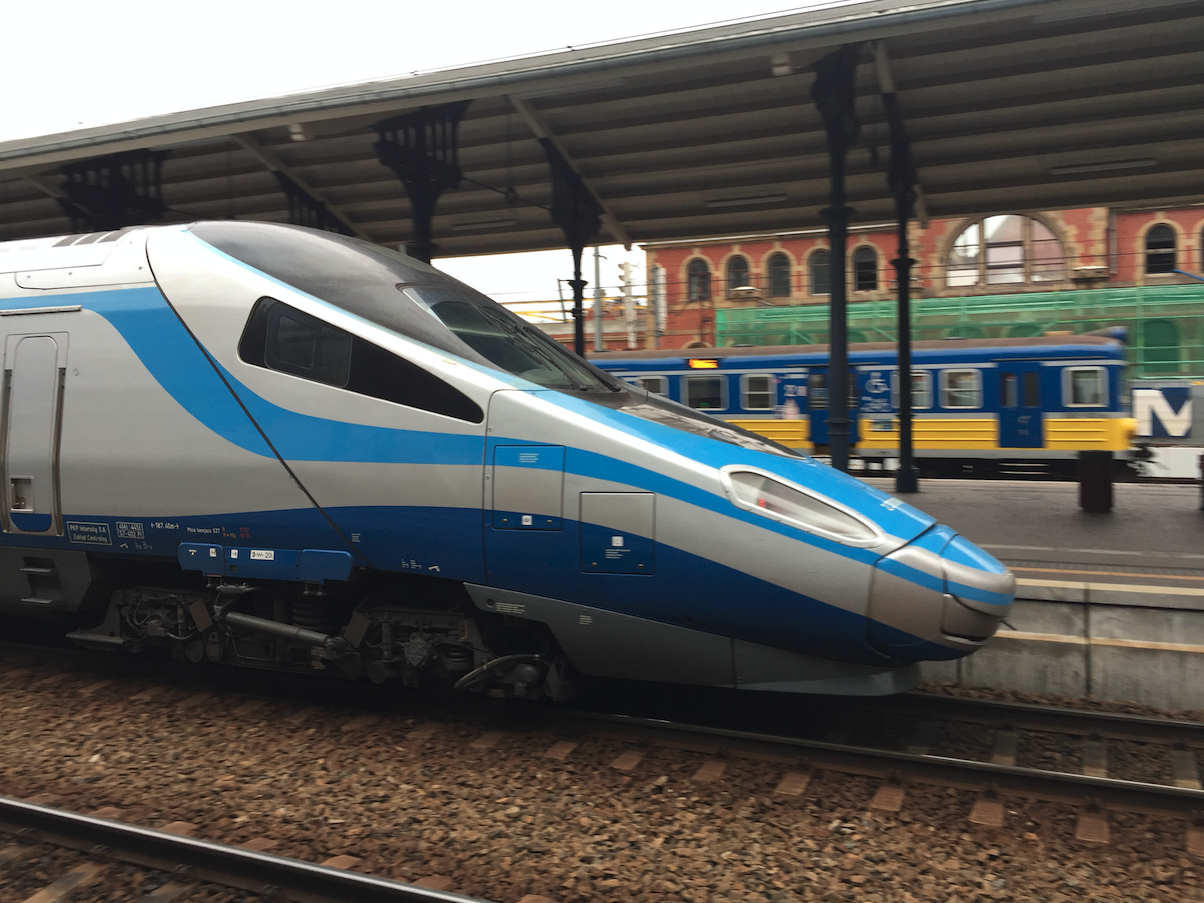
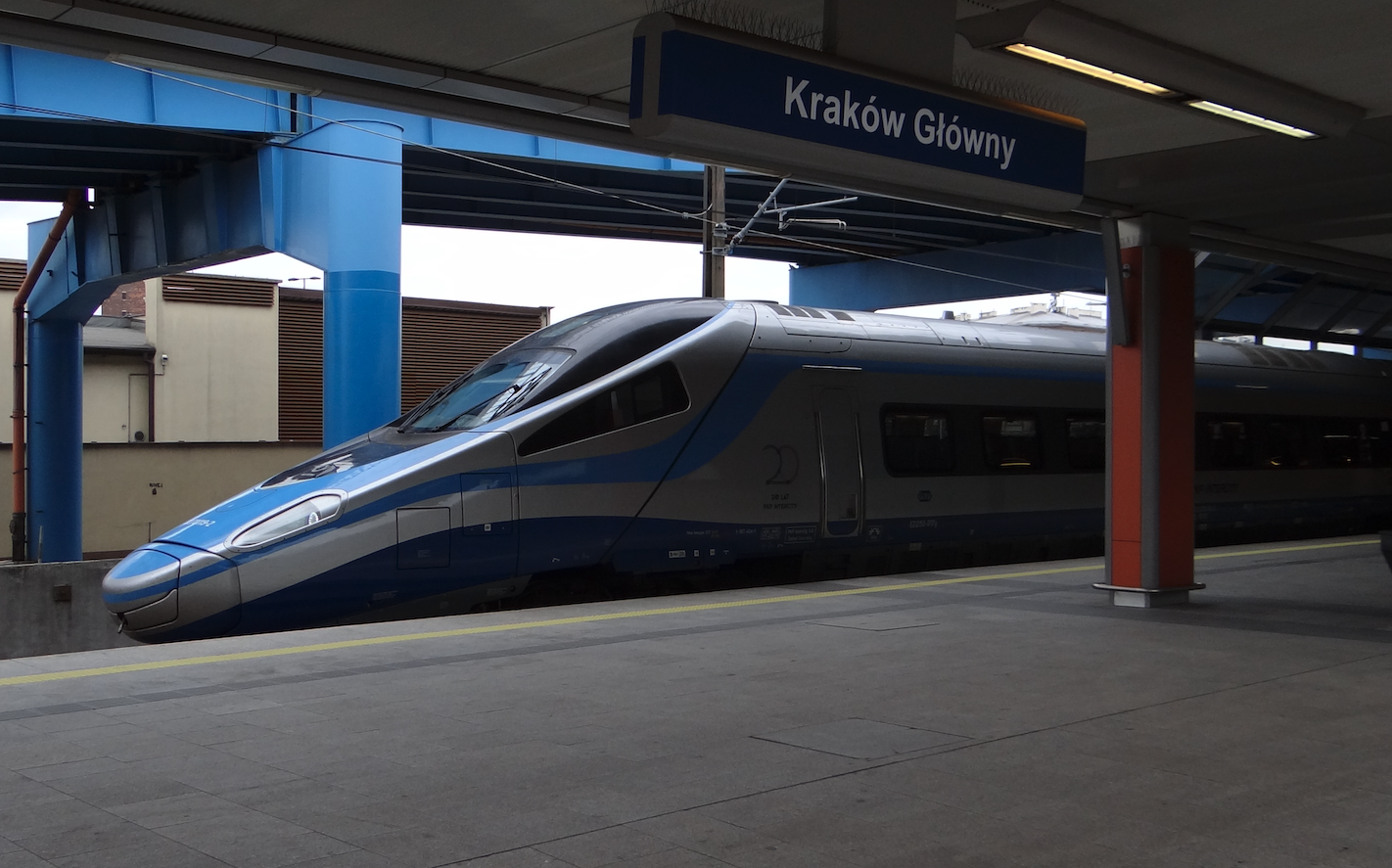
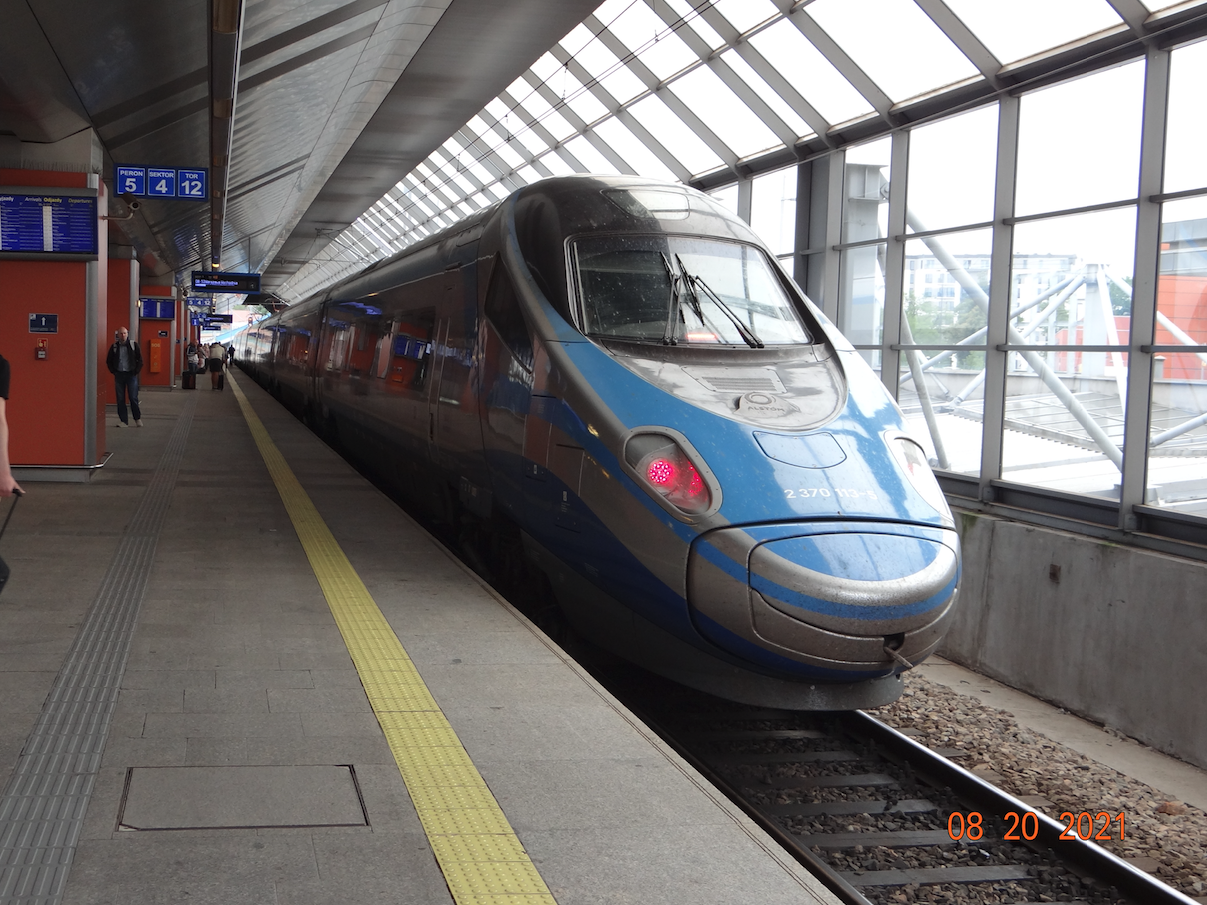
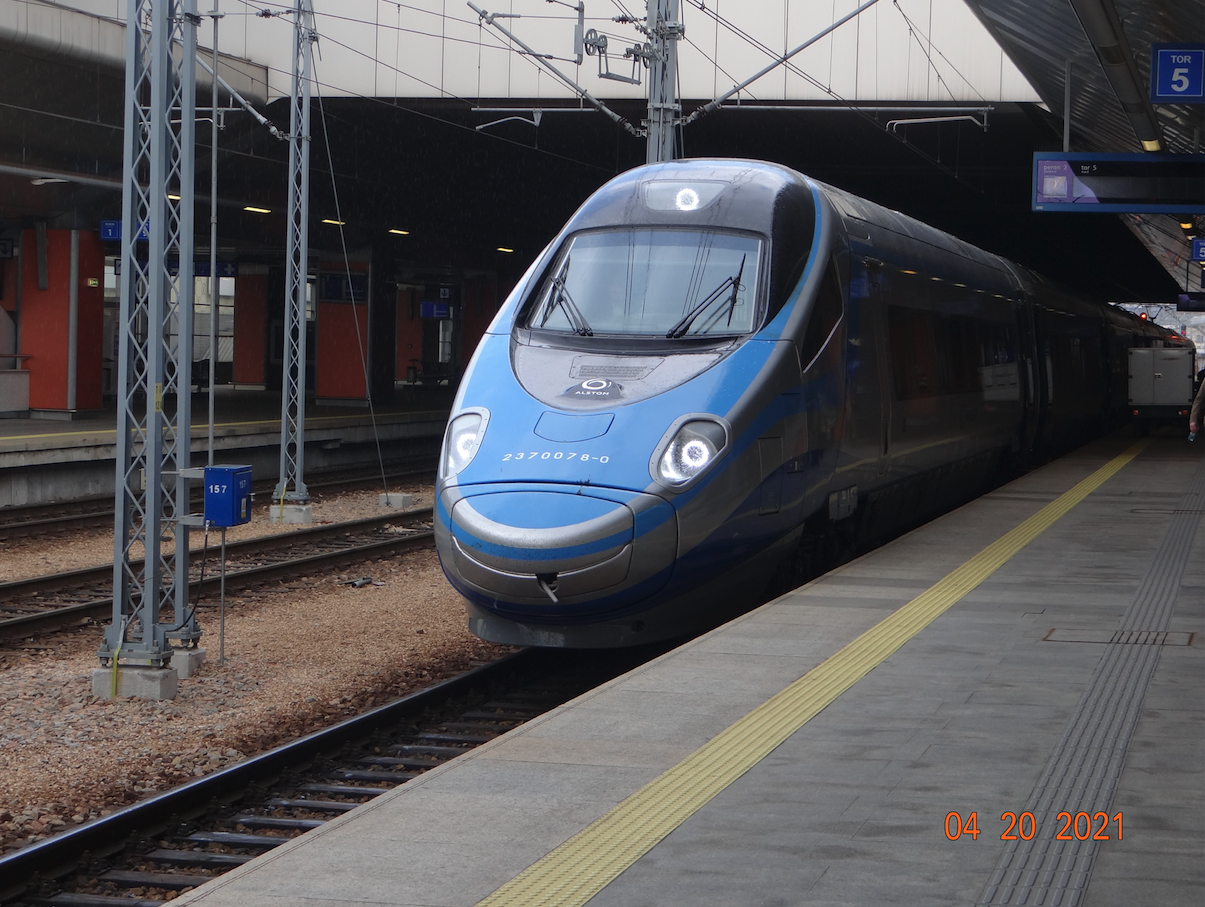
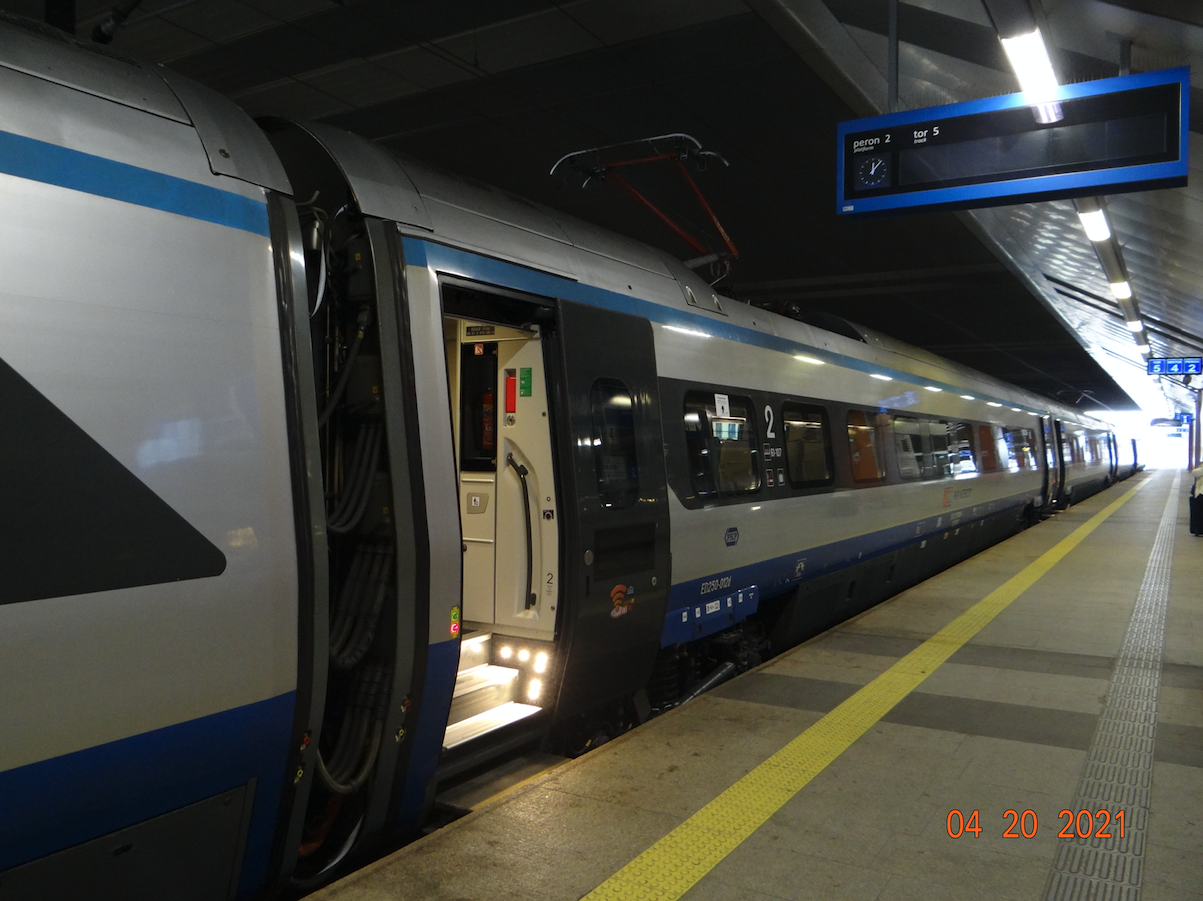
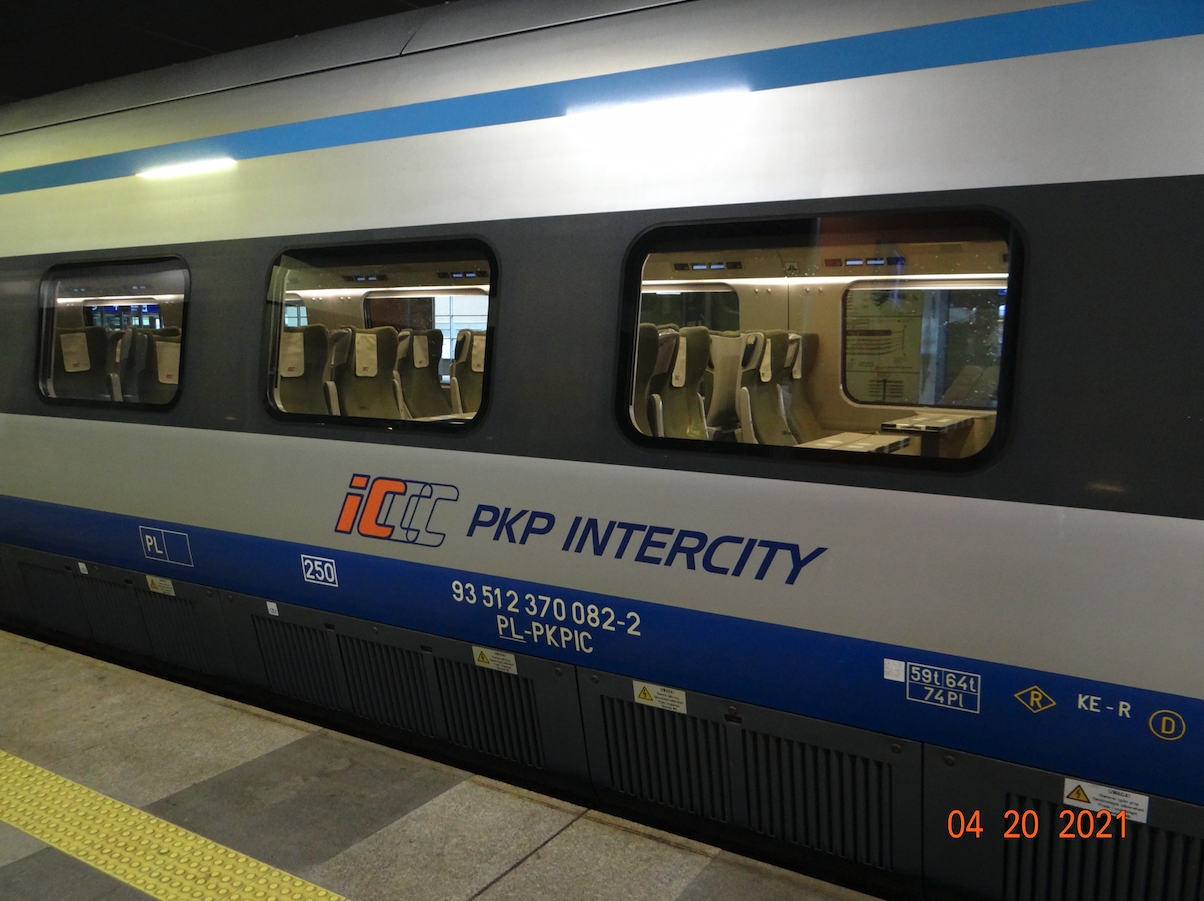
Written by Karol Placha Hetman
